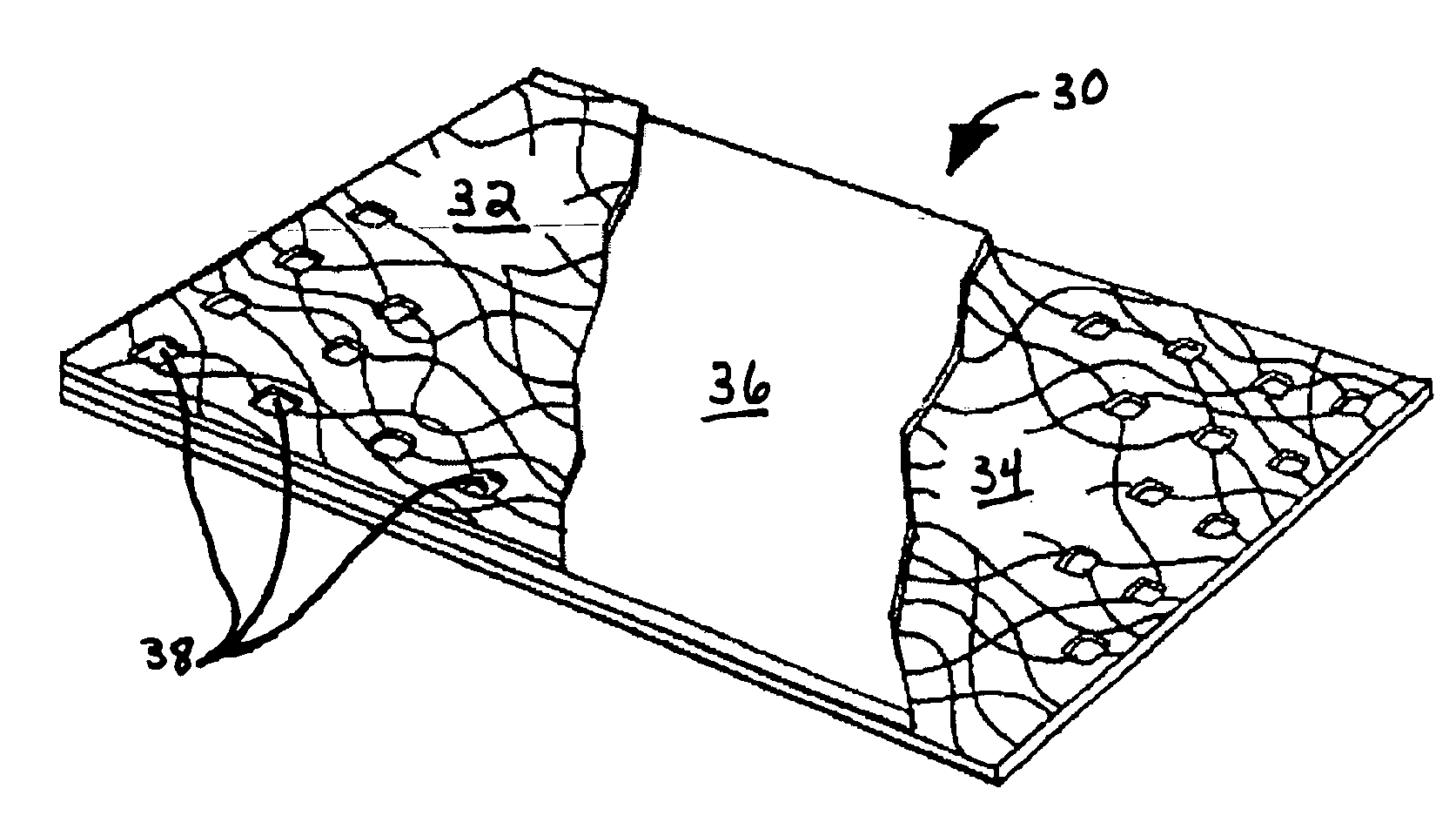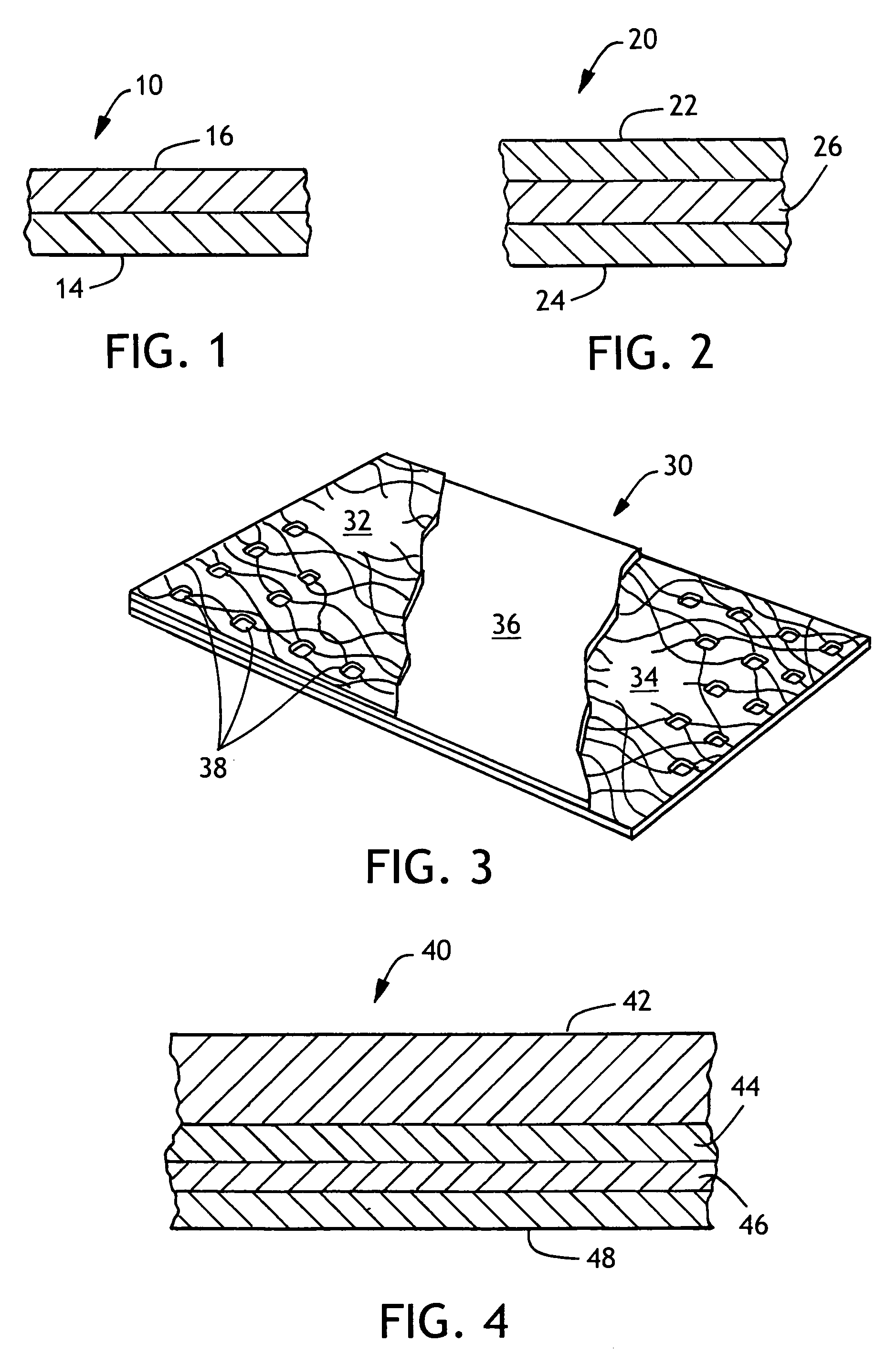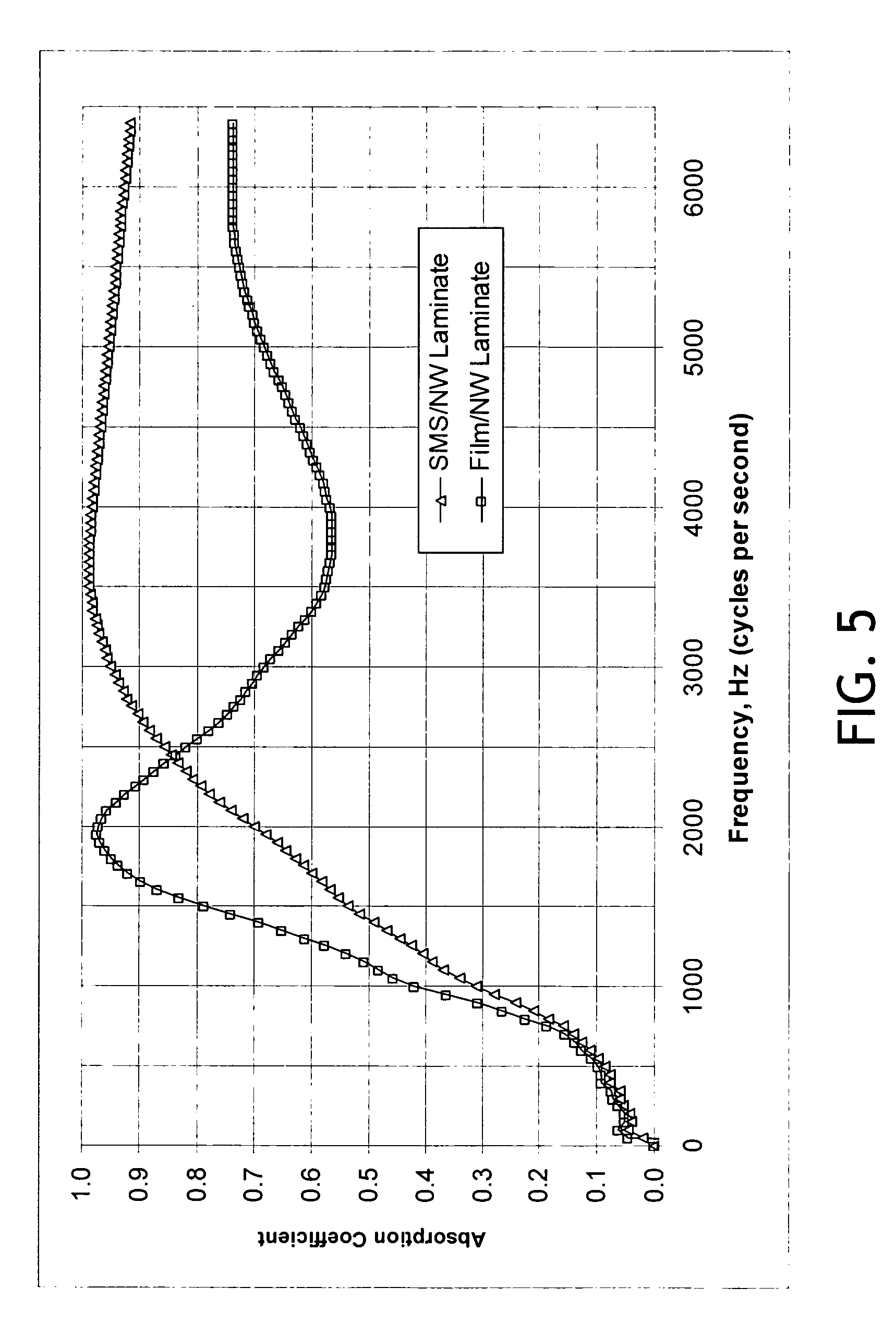Acoustic material with liquid repellency
a technology of acoustic insulation materials and liquid repellent materials, which is applied in the field of acoustic insulation, can solve the problems of less success in protecting against intrusion of low surface tension liquids such as salt-laden water, alcohols, ketones, and hydrophilic materials, and achieve the effect of attenuating transmitted sound and low surface tension
- Summary
- Abstract
- Description
- Claims
- Application Information
AI Technical Summary
Benefits of technology
Problems solved by technology
Method used
Image
Examples
example
[0047] To test the acoustic insulating properties of composite acoustic insulating materials having a film facing layer versus a nonwoven facing layer, the two types of composite materials were tested for sound absorption coefficient. Both of the composite acoustic insulating materials included a high-loft nonwoven web material which was layered with either the film facing layer or the nonwoven facing layer to form a composite. The high-loft nonwoven web material was QUIETECH® SP500 acoustic insulation available from the Kimberly-Clark Corporation, Dallas, Tex. The QUIETECH® SP500 nonwoven was a through-air bonded 6 osy (about 200 gsm) spunbond web material made from polyethylene-polypropylene side-by-side crimped bicomponent fibers and was about 12.7 millimeters thick. Samples of the QUIETECH®D SP500 material were adhesively laminated to the film facing and the nonwoven facing. The film facing used was a 78 gsm FABRIFLEX® film / nonwoven laminate material available from the Tredegar ...
PUM
| Property | Measurement | Unit |
|---|---|---|
| Concentration | aaaaa | aaaaa |
| Surface tension | aaaaa | aaaaa |
| Acoustic properties | aaaaa | aaaaa |
Abstract
Description
Claims
Application Information
 Login to View More
Login to View More - R&D
- Intellectual Property
- Life Sciences
- Materials
- Tech Scout
- Unparalleled Data Quality
- Higher Quality Content
- 60% Fewer Hallucinations
Browse by: Latest US Patents, China's latest patents, Technical Efficacy Thesaurus, Application Domain, Technology Topic, Popular Technical Reports.
© 2025 PatSnap. All rights reserved.Legal|Privacy policy|Modern Slavery Act Transparency Statement|Sitemap|About US| Contact US: help@patsnap.com



